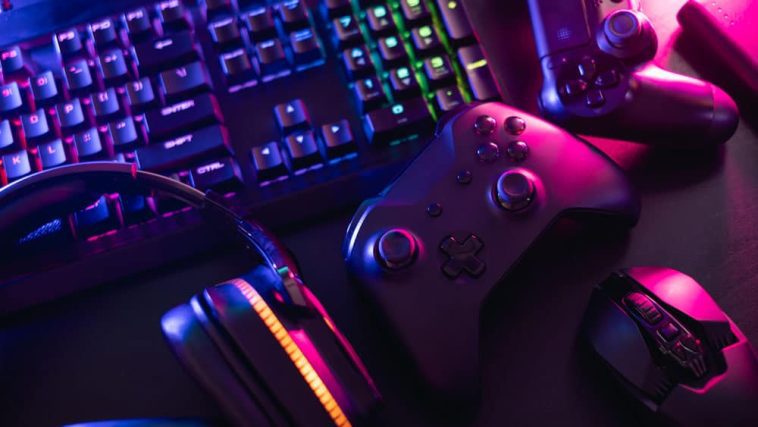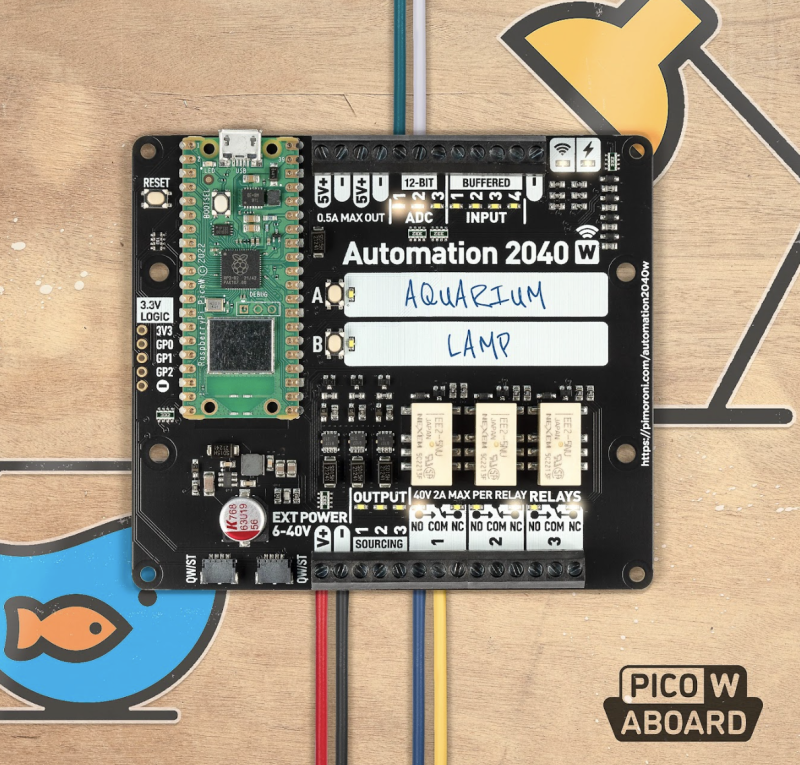At the bottom of the board, three relays (all with the option of a normally closed or open connection) can output up to 40 V at 1 A, or 24 V at 2 A. Next to them are three (switchable) sourcing outputs that can provide up to 4 A at up to 40 V for things like larger motors, solenoids, and pumps.
Along the top are three 12-bit analogue inputs and four buffered digital inputs, all tolerant up to 40 V. There’s also a pair of 5 V outputs for lower-voltage components. Finally, there’s a couple of Qwiic/STEMMA QT ports for breakout sensors, and an unpopulated header for a few of Pico W’s pins.
Let there be light
One really nice touch is the inclusion of a status LED (wired directly) for every input and output, so you can see when it’s active – ideal for debugging programs (in MicroPython or C/C++), even when external hardware isn’t yet connected. We also like the two programmable push-buttons with white space next to them to write labels.
Best of all is Pico W’s own wireless connectivity, which means that you can easily set up a web interface (an example is included in Pimoroni’s Getting Started Guide to control and monitor your devices.
Verdict
8/10
A little expensive, but then it is a standalone device and will work with almost all home automation systems.
Specs
Power: From 6 V to 40 V via screw terminals
Inputs/Outputs: 4 × digital inputs, 3 × 12‑bit analogue inputs, 3 × sourcing outputs, 3 × relays
Features: 2 × user buttons, reset button, status LEDs, 2 × Qwiic/STEMMA QT ports, unpopulated header




